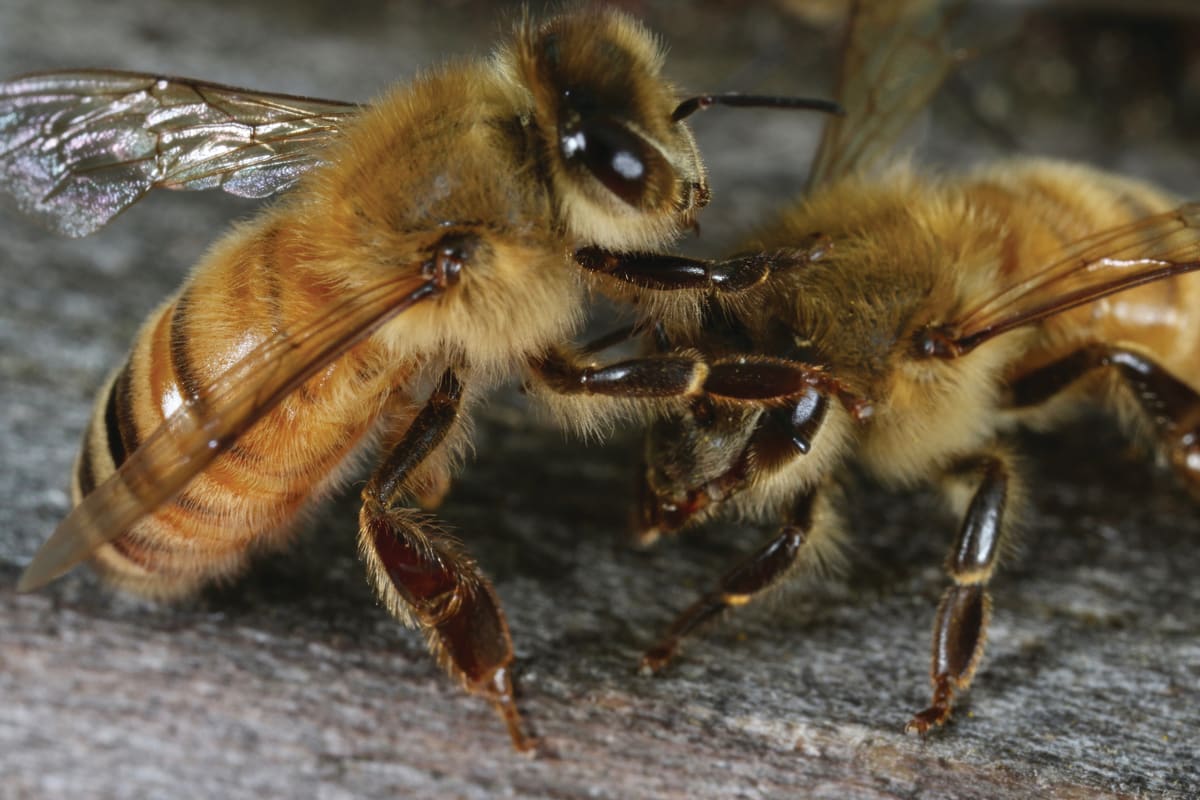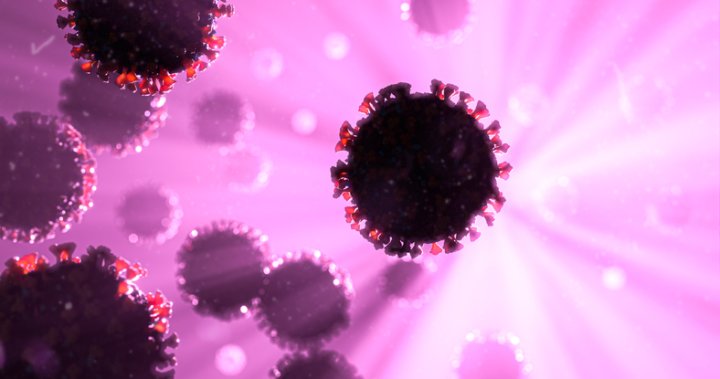Book of the Week: Bees are Rubbish
ReadingRoom
Dr Mike Dickison reports from the beehive
New Zealand has too many bees. This seems a strange thing to say, with protestors worldwide demanding that we Save the Bees. After all, if all the bees died, wouldn’t humanity shortly follow? No, we wouldn’t, but tomatoes and almonds would be a lot more expensive. Honeybees and bumblebees are needed for some crops, but in New Zealand about half our pollination is done by moths, flies, and native bees.
There was no honey in Aotearoa until the first hives arrived in 1839. Since then the honeybee (Apis mellifera), like other European imports, has multiplied enormously. Bees are by far our most numerous livestock. There are now nearly a million hives in New Zealand, each holds around 40,000 bees in summer, and those 40 billion bees outnumber all the cows, sheep, pigs, people, dogs, cats, and every other introduced mammal put together. Plus the chickens. Forty billion honeybees is a lot: there are only 100 billion in the entire USA. Our national bee herd has grown 200% since 2008.
Why do we have so many bees? We got by just fine for years with far fewer, and the two main things that bees make – honey and wax – are these days almost useless. Sometimes it seems as if jars of honey exist only to be gifted, like the giant stone coins of Yap. Honey does have some medicinal properties, especially if made from mānuka nectar, but honey is very much like Savlon: it only works when smeared on skin bacteria and not – this, really, is the critical point – if you eat it.
Mānuka honey is a house of cards. Quality can vary wildly from batch to batch. It took years before the industry could agree on a definition of the magical “mānuka factor”; adulteration and counterfeiting is rampant, and in Australia (where mānuka is also native) they’re busily cashing in on what may be a US$2 billion global market. Despite years of industry-funded trials, there’s still no good evidence that mānuka honey is useful for anything other than treating wounds (and you’d want to be using sterile medical-grade honey, not the stuff in Countdown).
Each year bees kill more New Zealanders than any other animal
At some point the world will work this out and the magic honey industry will collapse, leaving countless hillsides covered in freshly planted mānuka. But until then we have too many bees (which – fun fact – each year kill more New Zealanders than any other animal; worse than sharks and pit bulls). Too many bees means competition for the choicest spots, overcrowding, and dodgy behaviour. At a recent entomology conference I listened for an hour as the president of the Wellington Beekeepers association regaled us with stories of shenanigans and ratbags: arson, theft, “borrowing” hives overnight and returning them sans honey, spiking your competitor’s colonies with diseased frames, pallets of hives being helicoptered into the middle of national parks or private land without permission. The mānuka honey is so overheated it’s a wonder that nobody’s been murdered yet.
Bees are not in trouble in Aotearoa; in fact they’re doing extremely well. As Phil Lester explains in his book Healthy Bee, Sick Bee, we don’t have Colony Collapse Disorder, which has racked the US since 2006. On average, New Zealand beekeepers have about 10% of their hives fail each year, quite modest by world standards – it’s a mind-boggling 45% in Germany, not a great country to be an apiarist.
Lester sets out to explain what goes wrong with bees here, what we can do, and what we should be worried about. He does an admirable job, walking us through the strangeness of bee life (drones have sex just once, because their genitals explode with an audible pop), bee ailments (Deformed Wing Virus), and bee death (the horror of a zombie hive, a sepulchre littered with the stunted and dying).

The main cause of hive failure in New Zealand is pedestrian: the queen runs out of oomph. If a beehive is a single superorganism the queen is both its ovaries and its life force. When she stops laying, the hive withers and dies. Queens only last four years or so, and some beekeepers get a fresh queen every year.
Wasps are also a significant threat to hives, especially in the warm dry north where can overwinter in gigantic meganests. Luckily beekeepers now have Vespex, a targeted poison that’s attractive to wasps but not bees. We should be more worried about Asian hornets, which are just a dodgy shipping container plus a little climate change away from getting a foothold in Auckland and marching their way down the country, devastating bees and, oh, incidentally, our native insect species as well.
Native insects aren’t mentioned at all in this book – fair enough – but neither are they mentioned in most of the public discourse about wasps and bees, even though natives do a substantial amount of pollinating. The overstocking of bees in New Zealand means they’re competing so hard with each other that starvation becomes a significant cause of hive failure. If the bees are starving each other, what are they doing to our native ecosystems? Lester calls bees “the canary in the coal mine”, but canaries are fragile creatures that die first; honeybees are coddled and fed and housed and fretted over; our native insects don’t have such a cushy life. Hives are dropped into the back country and lined up around native forest remnants, and we know very little about what effect those 40 billion hungry bees are having.
We desperately need to be keeping track of what’s going on with the hive-killing parasitic mite Varroa, which was first detected in Auckland in 2000 and by 2013 had reached Bluff
We actually know very little about honeybees in New Zealand at all. As far as we can tell, pesticides aren’t a significant problem for them here. Lester gives a good summary of the European research, which is surprisingly inconclusive: pesticides like neonicotinoids aren’t the “smoking gun”; some healthy hives are riddled with agricultural chemicals, some collapsed ones have none. It varies wildly from country to country, and we don’t know what’s going on in New Zealand because nobody’s looking. There’s almost no government-funded hive monitoring, and commercial beekeepers just voted against Apiculture NZ funding any research into bee health. This is a chronic problem in New Zealand: primary industries with half a billion dollars in revenue seem to think it’s not their responsibility to fund R&D, and would rather the taxpayer did it for them.
This is a shame, because we desperately need to be keeping track of what’s going on with the other main hive-killer in New Zealand – the introduced parasitic mite Varroa, which was first detected in Auckland in 2000 and by 2013 had reached Bluff. Scourge of hives worldwide, this tiny greeblie hitchhikes on workers, hides in wax cells, and feasts on the developing pupa. Varroa gradually enfeebles the entire hive and leaves it open to robbing by nearby bees (and in New Zealand there are always nearby bees). Like the crew of the Nostromo, the doomed pillagers carry their booty and a few mites back, and the cycle starts again.
Varroa comes from Asia, where native bees know how to detect and neutralise it. European honeybees have no such natural defences, so Varroa has spread right around the world – except, so far, Australia. It’s no surprise: for years beekeepers have been trucking hives back and forth and sending bees internationally willy nilly, without the biosecurity regime we demand for livestock like cows and sheep.
Varroa research in this country seems to be chronically underfunded, epitomised by the case of veteran Westport apiarist Gary Jeffery. In 2013 he had 1000 hives; in 2014 after a mite outbreak he was left with six. Undaunted, he bred from those surviving bees, and now has 300 hives that seem to be naturally resistant to Varroa. Given this is only the main affliction of the entire planet’s honeybees, you’d think his work would be of both national and international interest. But Jeffery has had no luck drumming up funding. A recent application to the Provincial Growth Fund to invest in his breeding research was turned down. Not to worry, though: Westport did get $9.4m for a very nice recreational cycle trail.
Healthy Bee, Sick Bee: The Influence of Parasites, Pathogens, Predators and Pesticides on Honey Bees by Phil Lester (Victoria University Press, $30) is available in bookstores nationwide.
* For more reviews, go to Kete, the site of the Coalition for New Zealand Books.*





